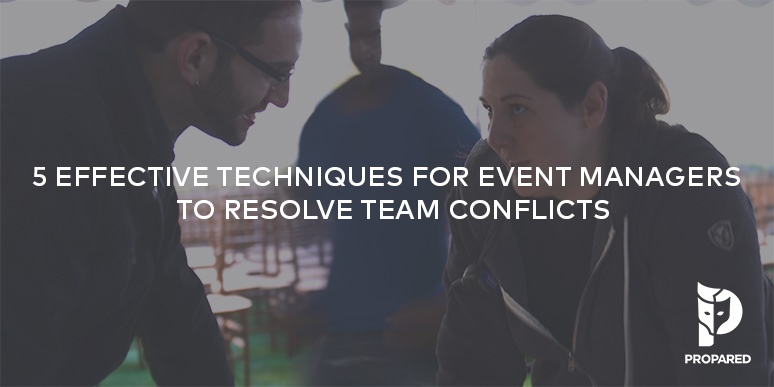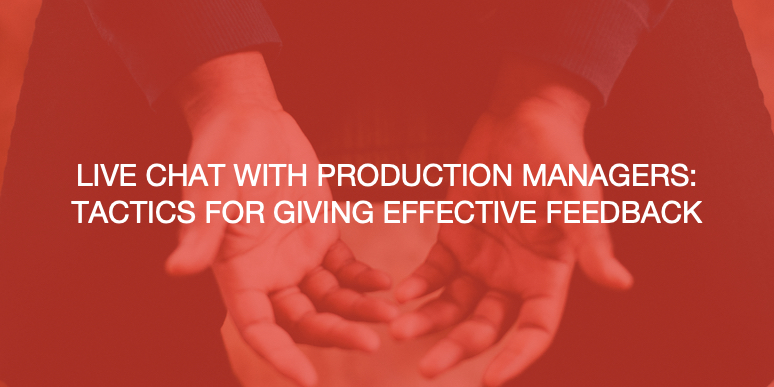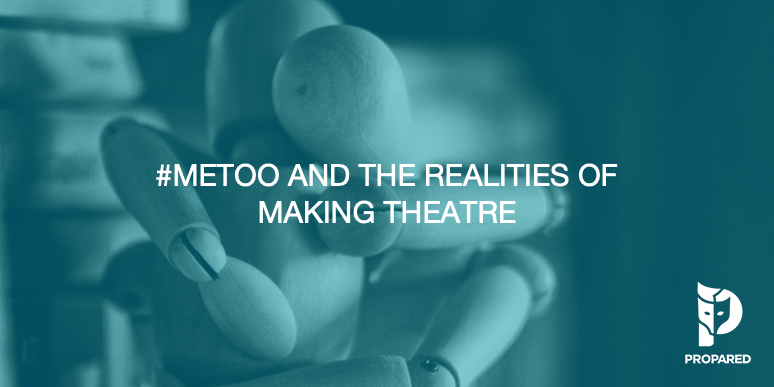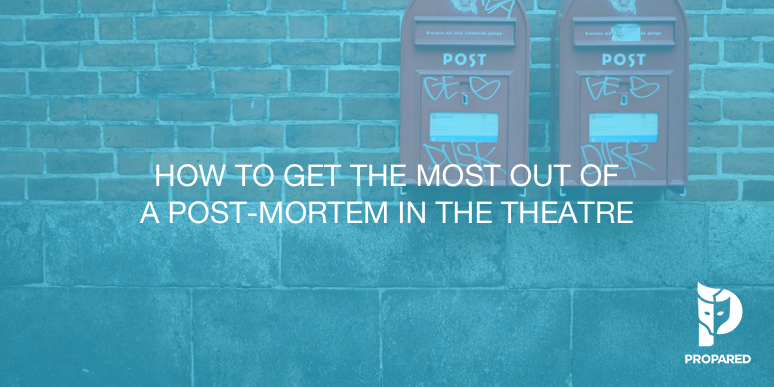
Event managers work in stressful environments. In an industry that cannot function without the efforts of hundreds to carry off an event, conflicts are bound to happen. Here’s a few thoughts about how to resolve conflicts at work when they happen and some tips to reduce the likelihood of them occurring again.
1. Set Expectations
Conflicts often occur when two parties enter a situation expecting different things. I can’t count the number of times I’ve walked onto a job-site expecting one thing and encountered another. To reduce the likelihood of a dust-up, keep everyone on the same page through clear, constant communication. Think about what might be important to all parties. Here’s a few examples.
-
Specific job roles
Everyone has a slightly different view on what certain job titles mean. A Production Manager in film is very different from a Production Manager in theatre. Most of us work across categories so confusion is bound to occur. Be blatantly clear. Even better, write it down! Don’t just assume everyone knows what everyone else is doing.
-
Main Project Goals
I know, the main goal of every production is to put on a great show! But there are other, sometimes equally important goals for the client. I’ve seen plenty of gigs that looked and sounded great technically but didn’t deliver leads, drive sales, or push the client’s brand the way we all hoped. While your team may not be directly responsible for achieving these alternate goals, sharing them will give context to the work.
-
Appropriate Conduct
The working atmosphere from event to event can be quite different. Your crew should know the tone of the job site they are walking on to. Here are two real world stories.
1. Brand activation for a company that sells cleaning products. The event is designed to project cleanliness, order, and specificity. Translation? Make sure that all cable runs and paint lines are similarly clean, tidy, and precise.
2. A gig is on an extremely tight time frame and the client is under a lot of pressure. Translation? Make sure someone from your team is always nearby to head off any moments of panic.
2. Perspective Shift
Perspective shifting is one of the least-practiced, yet clearest methods to get at the heart of a conflict. Everyone approaches a situation with his or her own goals and needs. But wouldn’t it be better to spend some time thinking about the goals and needs of those around you?
Something that to you seems innocuous might be a huge deal for someone else. Ask yourself these questions to begin shifting your perspective.
-
Who will yell at this person if something goes wrong?
-
What does this person think about my job role?
-
What does he or she believe to be the current status of the project? Is it on schedule, behind, and/or over budget?
-
How does he or she respond to stressful situations on site?
-
What is the overall energy of the working environment?
Someone’s reactions can be the result of whether he or she thinks you are meeting, exceeding or failing short of his or her expectations. Don’t get defensive. Seek to understand first, then have the conversation.
3. Don’t React Emotionally
Another very difficult thing to do in practice. Conflicts can quickly get heated. If you feel threatened, it’s natural to get defensive and retaliate. What is really a small matter could quickly get blown out of proportion. Before you lash out, take a breath. Most likely, the conflict is not about you. Or said another way, it isn’t a personal attack. Stress can cause all of us to overreact, even misdirect anger and blame. Try to focus on the facts, what needs to be accomplished, and what the current options are. There will be time after the event to debrief and address any lingering concerns.
4. You Don’t Know Everything
Everyone has been on both sides of this hot debate. You dismiss someone by saying, “Oh, he’s just crazy.” Or someone dismisses you in the same hurtful way. “Why is she being like that?”
People aren’t “just crazy.” Reactions that seem irrational are often grounded in very real concerns. Concerns you might not yet be aware of. The person may be trying to juggle ten tasks at once, some of which don’t involve you. Or it may be more personal. Something happened before getting to work. Listen and ask questions to get at the heart of what’s really going on. Even if you can’t solve it, it will at least signal you’re sensitive to the situation.
5. When in Doubt, Bring Food and Coffee
I can honestly say that for all of the HR training, perspective-shifting, and conflict resolution advice I’ve heard or read over the years, sometimes the best solution is to show up with some breakfast and caffeine.
Event management is an art. There’s never one right way to address any situation and no two situations are the same. Ultimately, the best way to go about resolving conflicts is to try to avoid them in the first place. Not by ignoring them, but rather by identifying potential sources and addressing them before they become critical problems.
For a more in-depth discussion about perspective shifting and other topics in this blog, I’d strongly recommend checking out “The I-Havior Manual,” by Lance Darcy.



